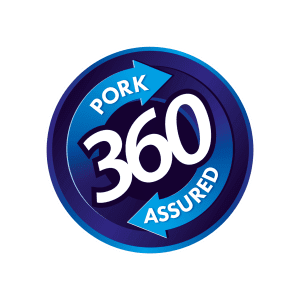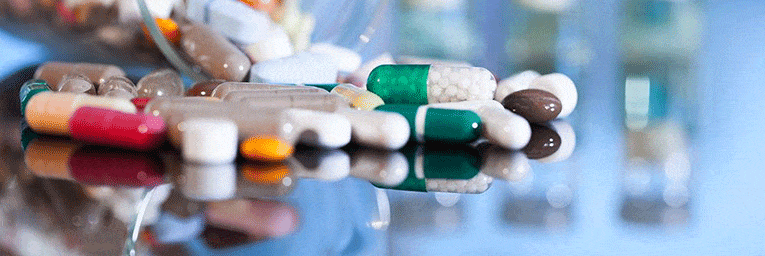By Dr Caraliegh Stander, CS Vet
Antimicrobial resistance is not a new topic and it is much more than just a buzz-word. The Scottish physician, microbiologist, and pharmacologist Alexander Fleming first warned about antibiotic resistance in 1928. By 1968, researchers estimated that 50% of antimicrobial use was either unnecessary or inappropriate.
During the WHO World Antibiotic Awareness Week which took place from 12 to 18 November 2018, antimicrobial resistance was identified as one of the biggest threats to the health of all people world-wide, food security and development. In 2009, 25 000 people in the European Union (EU) died from multidrug resistance (MDR) bacterial infections. In 2011, 15 000 tons of antibiotics were sold in the USA for meat and poultry production, while 3 500 tons were sold for human use. It is estimated that ten million deaths and 300 million premature deaths will in 2050 be caused by resistance to antibiotics.
However, the discovery of antibiotics has radically changed the way we live. It is perhaps the type of drug to have saved the most lives in the world and has also allowed us to produce an enormous amount of food.
Antimicrobial stewardship
Antimicrobial stewardship is a set of coordinated interventions designed to improve and measure the appropriate use of antibiotics. The stewards are:
- Veterinary services, vets, vet students
- Policy makers
- Farmers
- The pharmaceutical industry.
- Wholesalers and retailers
- Animal feed manufacturers.
- Consumers (of food and as patients)
Antimicrobial stewardship globally
It is estimated that up to 50% of human antibiotic use and 80% of veterinary antibiotic use could be eliminated without serious consequence.
In 2006, the EU banned medically important antibiotics as animal growth promoters. In 2013, the USA began a three year transition period to place regulatory restrictions on the use of antibiotic agents in animals for growth promotion, while China announced in 2016 that the use of Colistin (a last-line antibiotic to treat MDR infections in humans) as a growth promoter in animals would be replaced by non-human antibiotics. In 2016 the United Nations General Assembly (UNGA) acknowledged the public health threat of antimicrobial resistance (AMR) and called for a coordinated global effort to develop and implement multi-sector national action plans, policies, regulations and initiatives to preserve global access to effective antimicrobials. South Africa’s position is influenced by our unique socio-economic climate, which requires alternative policies and mitigation strategies to embrace antimicrobial stewardship.
- With each passing year of antibiotic use, resistance increases and effectiveness decreases. It is crucial to preserve the efficacy of antibiotics because:
- 20% of animal production losses globally are caused by disease.
- 60% of human pathogens are of animal origin.
- 70% additional animal protein will be needed to feed the world by 2050.
One possibility to be considered is the collective management of antibiotics in the way that fish and forests are managed – as a resource to be preserved. The tragedy of the commons is the fact that shared resources are overused because each person’s strategy is to provide for themselves only but if it continues, none will be left.
Resource management
There are various alternatives to antibiotics that can be utilised:
- Enzymes, ZnO, competitive exclusion products (probiotics and prebiotics)
- Vaccination
- Management
- Pig flow
- Biosecurity
- Disease eradication
When antibiotics must be used, one is to use as little as possible but as much as necessary. Bacterial cultures, antibiograms and minimum inhibitory concentration (MIC) tests must be employed to make the responsible choice when antibiotics are needed.
Alternative AGP, antimicrobial agents
Roger Davin, DVM, PhD Researcher at Schothorst Feed Research did a study on the subject “Weaning pigs without antibiotics and pharmaceutical levels of Zinc Oxide”. ZnO was administered in feed as a nutrient (120-150ppm) and as antimicrobial (2500-3000ppm). The hypothesis of the study was “the excessive use of ZnO may have a negative effect on the distribution of bacteria in the gastro-intestinal tract, resulting in excess growth of Clostridia and decreased population of Lactobacillus”.
It was found that the positive properties of ZnO as an antimicrobial are that it is cheap, effective, promotes growth and decrease feed costs.
Negative properties include the fact that zinc leaches from slurry into ground water and represents a risk for humans and the aquatic species. There was also evidence that methicillin-resistant Staphylococcus aureus (MRSA) carry Zinc resistant genes.
Furthermore, high levels of ZnO also increase Clostridia and decrease Lactobacilli (along with E.coli) as the hypothesis stated.
The following factors should be considered when formulating diets without antibiotics:
- Liquid pre-starters to increase feed intake and ease the transition to dry feed
- Provision of solid feed pre-weaning
- Pelleting improves fat and fibre digestion
- Processing of raw materials increases protein
- Animals consuming diets low in crude protein but supplemented with Isoleucine and Valine outperformed piglets on a high crude protein diet
- Biosecurity is very important.
- Stress around weaning should be reduced
- Vaccination has the following advantages:
- Prevention is better (and often cheaper!) than cure
- Strategic measures to be employed when formulating a vaccination program include bacterial culture, virus isolation and serotyping
- It contributes to internal biosecurity
- It is a good animal welfare practice
- As far as management is concerned, the following measures should be taken:
- Optimum temperature
- Minimum ventilation
- Stocking density
- Relative humidity
- Cleaning, sanitation and hygiene (dry time!), waste management
- Phase feeding, formulations
- Feed and water quality
- Staff flow must be properly managed
- If you look at pig flow, the ideal is to have a system of all-in-all-out. With that it is possible to have a unidirectional flow of pigs with batch farrowing and a closed herd.
- Biosecurity is very important. The following should be kept in mind:
- Identify the risks of each particular farming system – people, pigs, other animals, pests, transport, equipment, products, feed, water, maintenance and infrastructure
- Internal versus external biosecurity must be kept in mind
- The commitment of all involved is critical
- Measures must be feasible and practical
- Biosecurity must be measurable (hygiene surveys, regular inspections)
- Biosecurity must be a continuous effort
AC Berge, a veterinarian from Belgium said that the majority of antibiotics in animal production are not used to treat sick animals but are used to treat unhealthy production systems. This statement is perhaps the hard truth that the industry will need to accept in order to bring about change in the antimicrobial realm.
The South African Pork Producers’ Organisation (SAPPO) coordinates industry interventions and collaboratively manages risks in the value chain to enable the sustainability and profitability of pork producers in South Africa.








